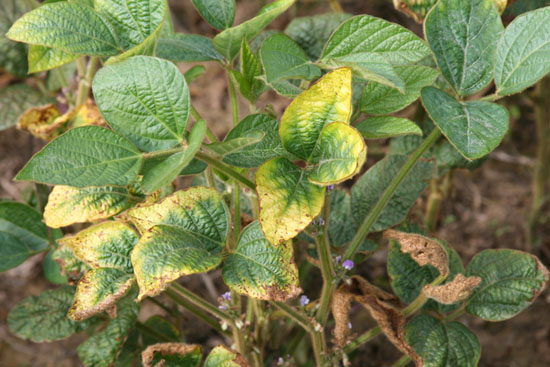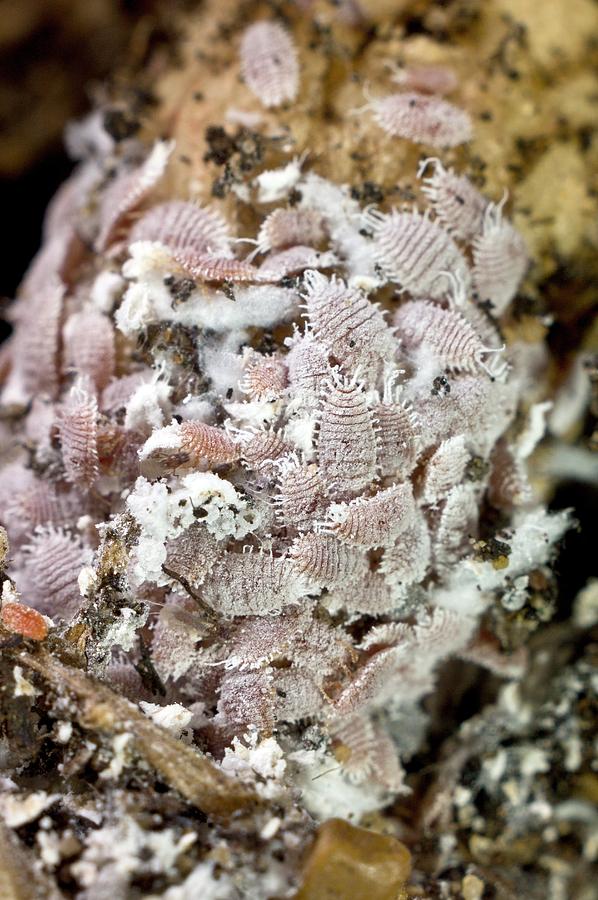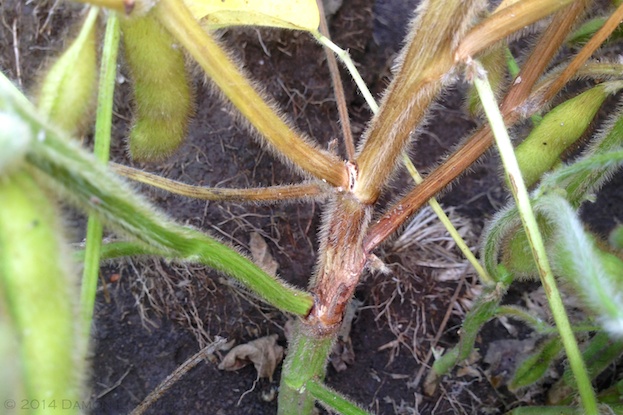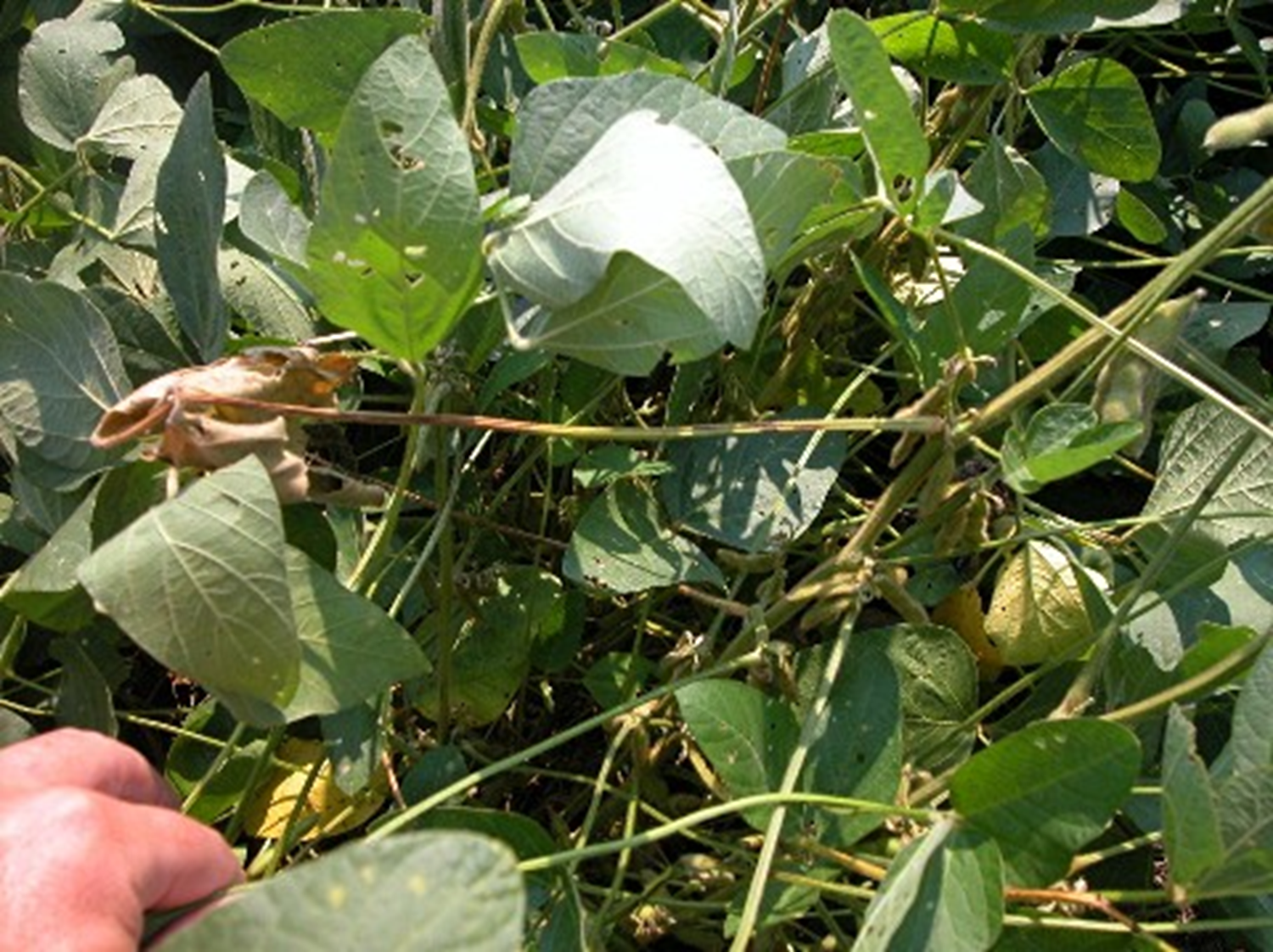A Few Uncommon Soybean Ailments That May Baffle You
In the early days of Saturday Night Live, Steve Martin and Bill Murray killed time at the end of a show by standing on stage, looking totally dumbfounded by some imaginary object out beyond the camera and repeating these phrases over and over: “What is that thing? What the **** is that thing? What is that?”
It was odd and the audience didn’t quite know how to respond. Still, I’ve remembered that bit all these years. It particularly comes to mind when I get a call from a soybean farmer who runs across a malady out in the field that doesn’t resemble anything they have seen before. After all these decades of growing soybeans in Illini Land, you would think we have seen it all by now. Not even close.
Here is one such puzzle. You find plants in your field that are green and healthy at the lower levels and then dead or dying on the top half. Any number of critters or diseases may be at work here. Let’s examine a couple of the more common uncommon variables.

Picture A
Bart lives in Effingham and likes to eat at that great restaurant there. Bart sees plants that are discolored and dying at the top where the most recent growth has occurred, much like potassium deficiency (Picture A). Perplexed, he digs up the plant and finds a colony of these fuzzy, white, prehistoric-looking bugs on the roots (Picture B). Trochanter mealybugs have been recognized in many states now. By inhibiting root function, they rob the plant of receiving vital nutrients in the newly formed leaves. It is not likely you will sustain significant economic damage or even be able to treat for them, but now you know something the rest of your squad doesn’t know.

Picture B: Dr. Jeremy Burgess

Picture C: Badgercropdoc
Ginny farms near Easton (which I chose just because Easton is west of Weston, but that’s Illinois geography for you) and has encountered the aforementioned “green on the bottom half, dead on the top half” syndrome (Picture C). The decay noticeably begins at one particular node on each plant. Her pal in the Mississippi Delta looks at a photo she sent and tells her it is Stem Canker. That’s odd. Isn’t Stem Canker a southern problem? There is actually a northern version of Stem Canker. Both are variations of diaporthe fungi and outbreaks seem to occur once or twice per decade. The pathogens can overwinter in residue and spring rains can splash the disease onto the plant, or infected seeds may be a culprit as well.

Picture D: Jeff Shaner
Cal from Hoopeston, the home of the Cornjerkers, is scouting his soybean field and sees individual petioles (or petiolules if you like debating such things) that have withered (Picture D). In some cases, the plant is dying from that point on up. When Cal cuts the stem open, he finds something has tunneled right into that petiole and down the stem of the plant. We are all aware that we have worms that eat their way into corn plants, but what uncouth pest would do this to a kind and congenial soybean plant? Dectes Stem borer would. I first ran across Dectes in my career while near Bernie, MO, so I have affectionately dubbed it the Bernie Bean borer. Mostly you find damage near grassy field edges. By the time you discover the handiwork of these worms, no treatment can get to them deep in your plant stems. You will look rather clever when you can identify this oddity in front of a crowd at a field day when nobody else has a clue what it is.
Iowa’s Gall Midge problem is recent and expanding. Soybean Vein Necrosis virus came along a few years ago. Most every growing season tosses a new twist at us and makes you stop and mumble “now what is that thing?” Fortunately for us all, we have a great network of communicators, educators, and field specialists in the Illinois ag community. Encounter an oddity? Contact us here at ILSoyAdvisor and let’s figure it out together.






 and then
and then